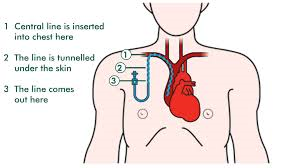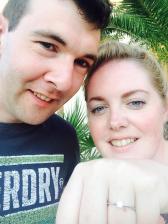Following on from previous blogs that I have posted, this week I am going to look at Non Accidental Injury (NAI) and the use of radiographic examinations that are carried out within this field.
As stated by the Society and College of Radiographers (2014) within their guidance for radiographers providing forensic radiography services guidelines, all examinations for non-accidental injury are forensic examinations (Society and College of Radiographers, 2014) which are examinations that use application of the science of diagnostic imaging to answer questions of law (Society and College of Radiographers, 2014), as discussed in previous blogs. The Royal College of Paediatrics and Child Health (RCPCH) and the Royal College of Radiologists (RCR) discuss that radiographic imaging of an injured child is critical to the process of child protection (RCPCH & RCR, 2008).
Non- accidental injury is defined as any form of abuse that is purposely inflicted on a person (IMI, 2014), for example emotional, sexual or physical abuse. Sadly it is stated that around 7% of children in the United Kingdom experience serious physical abuse at the hands of parents or carers (Association of Paediatric Radiographers, 2009) with around 55% of children that are fatally abused, being seen within the previous month by a healthcare professional (Association of Paediatric Radiographers, 2009). As radiographers the most common type of abuse that we will come into contact with is physical abuse. It is discussed that radiologists are usually the first professionals to notice signs of NAI (Luijkx & Bhattacharya, 2014), upon the review of radiographs. As set out in the Skeletal Survey for suspected NAI, SIDS and SUDI: Guidance for Radiographers which was set out by the Association of Paediatric Radiographers (Association of Paediatric Radiographers, 2009), when taking NAI into account with children and infants the first radiographic examination should be a skeletal survey conducted by two radiographers with at least one of the radiographers being specially trained (Association of Paediatric Radiographers, 2009). The skeletal survey should include the following plain film projections:
- AP/Lateral Skull.
- Lateral Cervical Spine.
- Lateral Thoracolumbar Spine.
- Chest X-ray.
- Left/Right Oblique Ribs.
- Abdominal X-ray.
- Left/Right AP Humeri.
- Left/Right AP Forearm.
- Left/Right PA Hand.
- Left/Right AP Femora.
- Left/Right AP Tibia/Fibula.
- Left/Right DP Feet (Luijkx & Bhattacharya, 2014).
Where NAI is one of the differential diagnoses a skeletal survey is the standard initial imaging method. Although if the child is suffering from serious life threatening injuries, then a skeletal survey may be postponed, implementing the use of other imaging modalities such as Computed Tomography (CT) (Association of Paediatric Radiographers, 2009). It is important that a skeletal survey is carried out as soon as possible as the outcome may affect the immediate clinical management of the patient and also the management of family/carers, also the early discovery of any suspicious NAI, will result in the child protection team being notified (Association of Paediatric Radiographers, 2009). The resultant radiographs may then be discussed in multi-disciplinary meetings or be used as part of court proceedings in NAI cases (Society and College of Radiographers, 2014).
Under the Ionising Radiation (Medical Exposure) Regulations 2000 either verbal or written consent must be obtained prior to the examination, along with sufficient justification for the examination being provided by the referring clinician (Department of Health, 2000). Whilst the child is in the department along with the two radiographers who are performing the skeletal survey there must be another health professional present who will be responsible for the child’s welfare and safety (Association of Paediatric Radiographers, 2009). The child must be clearly identified, and the identity of the child will need to be confirmed by two radiographers (Association of Paediatric Radiographers, 2009). The skeletal survey should be performed with correct and accurate positioning along with radiographic markers indicating the correct R/L on the images, and to the highest diagnostic quality, the time and date of the exposure should be added as soon as the images are acquired and not at a later date along with the name of the radiographer performing the examinations (Association of Paediatric Radiographers, 2009). It is also very important that the radiographer check previous images.
In conclusion it can be seen that although as radiographers in practice we may not undertake a lot of skeletal surveys for NAI, but the rules and regulations surrounding NAI imaging are vast and must be followed and adhered to. NAI imaging requires at least one specially trained forensic radiographer, although this is quite rare. It is important to mention that the child should be treated with respect, dignity and patience with the radiographer being calm and professional even with the high pressure and seriousness of the situation. It is of the upmost importance that the safety and welfare of the child is maintained to the highest possible standard.
References.
Association of Paediatric Radiographers. (2009, February 1). Skeletal Survey for Suspected NAI, SIDS and SUDI: Guidance for Radiographers. Retrieved November 27, 2014, from Society and College of Radiographers: http://www.sor.org/learning/document-library/skeletal-survey-suspected-nai-sids-and-sudi-guidance-radiographers
Department of Health. (2000). IR(ME)R 2000. London: Department of Health.
IMI. (2014). Non- Accidental Injury. Retrieved November 27, 2014, from Institute of Medical Illistrators: http://www.imi.org.uk/document/non-accidental-injuries
Luijkx, T., & Bhattacharya, B. (2014). Non-Accidental Injury. Retrieved November 27, 2014, from Radiopedia.org: http://radiopaedia.org/articles/non-accidental-injuries
RCPCH & RCR. (2008). Standards for Radiological Investigations of Suspected Non-Accidental Injury. London: The Royal College of Paediatrics and Child Health & Royal College of Radiographers.
Society and College of Radiographers. (2014, May 30). Guidance for Radiographers Providing Forensic Radiography Services. Retrieved November 27, 2014, from SCoR: http://www.sor.org/learning/document-library/guidance-radiographers-providing-forensic-radiography-services/9-non-accidental-injury-nai











